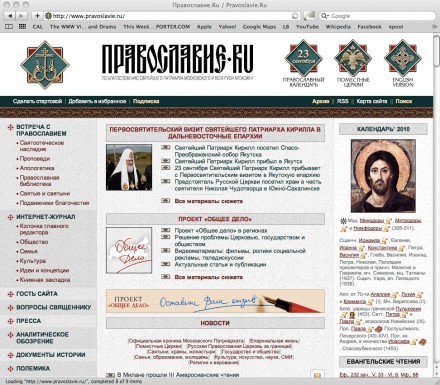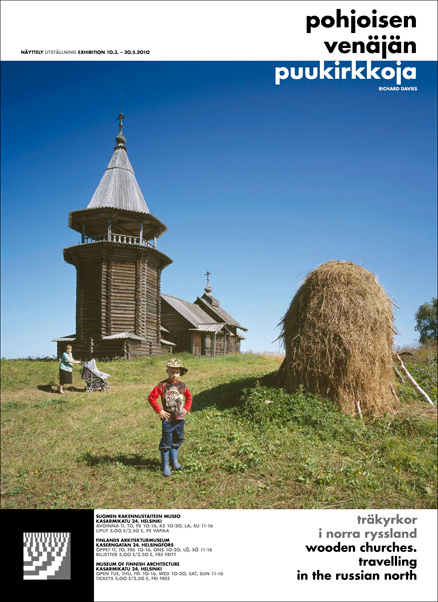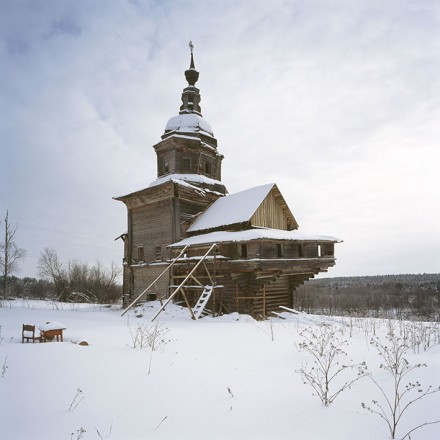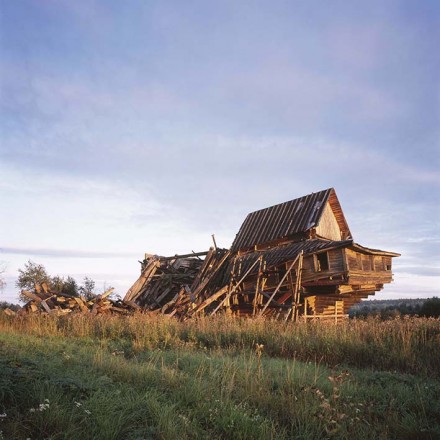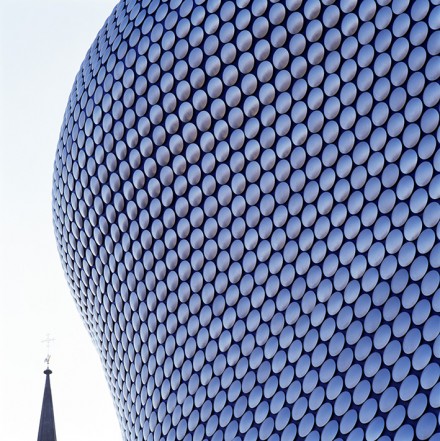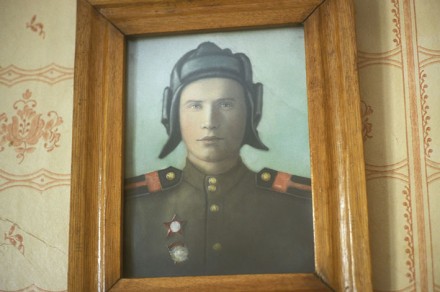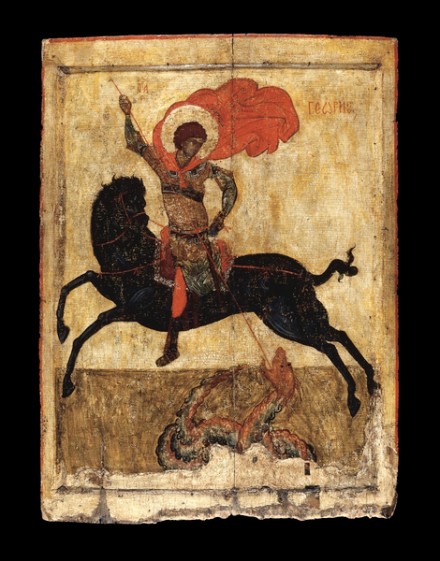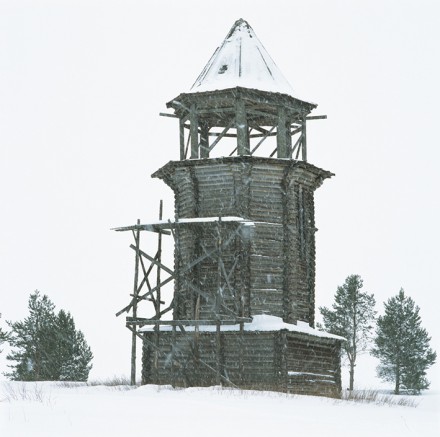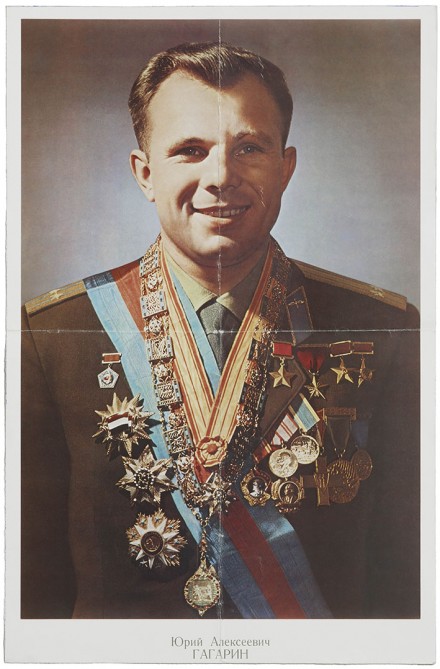Elena Alexandrovna Opolovnikova 1943-2011
August 5th, 2011 by Richard Davies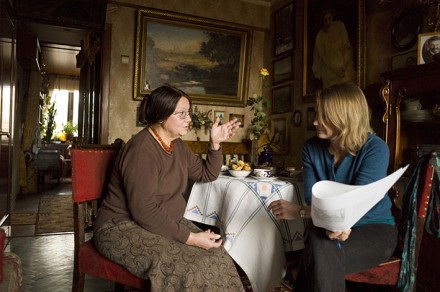
Elena and Matilda, May 2011
We were shocked and very sad to hear of the death of Elena Alexandrovna Opolovnikova on the 23rd June this year. This was a tragedy for Russia, which has lost one of its most determined champions of traditional wooden architecture. It was also a great loss for all her friends and those who worked with her. For us it was a loss, not only because she was a great supporter of our efforts, but also because she was our friend. We liked her very much, she was generous and loving, full of life, passion and wit.
Elena spent her life carrying on the work of her father, Alexander Victorovich Opolovnikov, who was responsible for restoring and saving so many of the wooden churches in Russia, including the ensemble at Kizhi island, which he worked on for many years.
On our trips to Moscow over the last 5 years, we have often visited her in her flat on the Rostov embankment overlooking the river. Stepping across the threshold (as she insisted before we kissed her), was to enter another world – the world of Old Russia – the world she loved. The small space was crammed with folk art, books, photographs, drawings and paintings, telling the story of Russia and its treasures. These artefacts described the Russian landscape, wooden architecture, and her own family history – a portrait of her grandmother in oils, faithfully observed drawings and paintings by her father. The table was always set with the best china and resplendent with treats prepared for our visit, the samovar steaming.
Elena would speak at length and with passion on the subject of Russiaâs wooden architecture under threat, of her father Alexanderâs work and of her tireless research expeditions to the countryside with her husband and (as she put it) âcomrade in armsâ Valery Tsyganov. She would speak with fury about the neglect of her beloved churches. Her tirades would often take on a religious tone, as she struggled to explain to us and herself how this collapse of culture in Russia had come about. This desperation to preserve the best of Russian culture and loathing of the worst was all consuming.
I would provide a translation for Richard but Elena was unstoppable, and as her narrative gathered speed like a runaway train there were no pauses for translation. Richard would nod and smile and would stop us to say that he didnât understand a word she was saying. She said that it didnât matter, he did know what she was saying, he did understand, because we were all working together towards the same end.
In 2007 she opened our exhibition at the Shchusev Museum of Architecture, together with David Sarkisian. She gave an empassioned speech, and wrote an empassioned foreword to our catalogue, calling us âheroes of the worldâ. It was extraordinary to us that she, one of the most committed guardians of Russiaâs heritage, gave us such support. There is no doubt that she is the hero.
She wrote of her hope that Richardâs photographs would be a âvisual exhortation to the cultural bureaucrats entrusted with the care of our monuments, to the modest, wise beauty and the greatness of ancient Russian wooden architectureâ.
Her work will surely stand beside that of her father in preserving and celebrating the great monuments of Russian wooden architecture. Her passing is an exhortation to those of us who care for Russiaâs wooden architecture to redouble our own efforts.
Matilda Moreton
London July 2011
+
